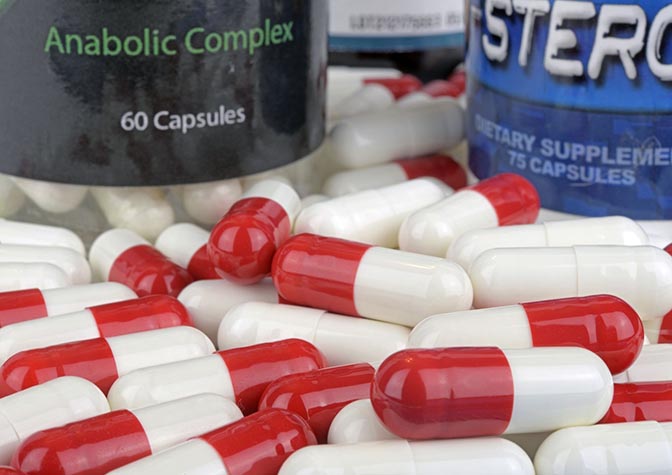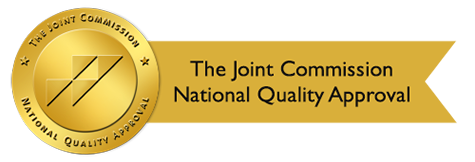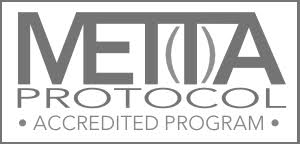Steroids are synthetic medicines that induce specific hormones customarily made by a person’s adrenal glands. It comes in many forms and can be taken or used as tablets, syrups, liquids, inhalers, nasal sprays, creams, lotions, or gels. Sometimes steroids are injected into joints or muscles to take effect.
What are the functions of steroids?
Certain types of steroids are used medically to treat various health conditions, usually hormone-related issues and diseases. However, some steroids are illegally utilized to increase muscle mass at an unnatural speed. These kinds of steroids are known to be used in the world of sports and fitness.
What Are the Main Types of Steroids?
The two main types of steroids are called corticosteroids and anabolic-androgenic steroids (AAS). They are used for different purposes and contain specific kinds of chemicals.
Corticosteroids are synthetic drugs designed to act like the cortisol hormones to reduce inflammation. This kind of steroids usually treats conditions like:
- Asthma
- Chronic obstructive pulmonary disease (COPD)
- Hay Fever
- Hives and eczema
- Painful joints and muscles
- Inflammatory bowel disease
- Lupus
- Multiple sclerosis
On the other hand, an anabolic steroid is a synthetic compound that copies the male sex hormone, testosterone. These steroids can build muscle and improve physical performance, but they can also have dangerous side effects, especially when misused.
Doctors prescribe AAS to treat hormone-related issues and diseases that involve muscle loss. They also prescribe this drug to patients who no longer produce testosterone naturally.
However, people who misuse anabolic steroids do not use them out of necessity but instead do so to improve physical appearance, build muscles quickly, and even induce a faster recovery period.
Anabolic steroids stimulate an imbalance in hormones in the body and can have permanent harmful effects if abused.
What are two examples of steroids?
Some of the steroids we take for medication are used widely, so they are somewhat easily recognized. Again, corticosteroids are what we call the steroids our bodies often produce. This kind of steroid is reproduced for medical use later on. Some familiar names you might recognize are prednisone, prednisolone, dexamethasone, methylprednisolone, cortisone, hydrocortisone, or triamcinolone.
Examples of popular anabolic steroids are anadrol, dianabol, oxandrin, and winstrol.
What chemicals are in anabolic steroids?
Anabolic steroids are a synthetic substance with variations of the male sex hormone, testosterone.
When consumed, the substance travels through the bloodstream to the muscle tissue and binds to an androgen receptor. The drug then interacts with the cell’s DNA and activates the protein synthesis process that promotes cell growth. Regular use of AASs can lead to drug problems like tolerance and result in the body halting its testosterone production.
There are over 32 types of anabolic steroids mentioned on commercial websites, but only a few have good medicinal uses.
People choose different types of steroids for various purposes:
- Bulking steroids – for building muscles
- Performance steroids – for the increase of strength and endurance
- Cutting steroids – for burning fat
Excessive use of anabolic steroids has adverse effects on an individual’s cardiovascular, metabolic, and reproductive systems. Regular use of the drug may have the following side effects and risks:
- Acne
- Oily skin
- Nausea
- Increased red cell count
- Altered cholesterol levels
- High blood pressure
- Fluid retention
- Insomnia
- Cardiovascular diseases
- Liver disease
- Organ tumors
- Cyst
- Stroke
- Heart attack
- Tendon Ruptures
- Osteoporosis
People who inject steroids put themselves in danger of contracting blood-borne diseases like HIV/AIDS and Hepatitis B, and Hepatitis C.
Do bodybuilders use steroids?
The use of anabolic, or tissue-building steroids, are usually androgenic, meaning they enhance male characteristics. When used, more men use it than women. Although the topic is controversial in competitive bodybuilding, to say the least, steroids are widely used in various forms.
Nowadays, most steroid users are no longer just bodybuilders or athletes, but simply people who wish to quickly improve their athletic performance or appearance. Many people take drugs as a shortcut to look leaner, more muscular, or more fit.
Steroid use and distribution that are not prescribed by a health care provider are illegal in the United States because of the health risks and hazards that come with it.
What are Dianabol/DBOL steroids?
Dianabol is the most widely used anabolic steroid, commonly in pill form, used by athletes and high-performance bodybuilders. DBOL aids in increasing muscle strength and muscle bulk.
DBOL dramatically increases the body’s protein production, increases the rate of breaking down sugar, and increases water retention that helps in strength training.
Although there are benefits to DBOL, continuous use is dangerous for the liver as it is processed faster than the average anabolic steroid.
Is Oxytocin a Steroid Hormone?
Oxytocin is a hormone that plays a role in female reproductive functions, particularly in sexual activity, lactation, and childbirth.
Outside of reproduction, Oxytocin also affects social functions and memory building. It is produced in the hypothalamus. When it is secreted to the bloodstream via the posterior pituitary gland, the person may feel increased empathy, trust, sexual activity, and a sense of loyalty.
Increased Oxytocin levels decrease depression, stress, and anxiety while simultaneously improving neurochemical adaptability, sociability, and confidence.
Although its effect can be similar to steroids, oxytocin’s chemical structure does not make it a steroid hormone.
What is the most powerful anabolic steroid?
There are more than 100 variations of anabolic steroids, but Dimethyltrienolone is considered the most potent form of AAS ever developed.
Dimethyltrienolone is a synthetic oral steroid derived from nandrolone. It has one of the highest known ligand binding affinities of any AAS for the androgen (and progesterone) receptors and has never been marketed for medicinal use.
This form of anabolic steroid is not widely utilized by athletes as it was never commercially produced. This agent is not potent and the most hepatotoxic steroid ever developed during the 1960s.
Signs of an Anabolic Steroid Addiction
Many users fail to see the addictive properties of AASs. Long-term, unregulated use of anabolic steroids can affect some of the same brain pathways and chemicals affected by other drugs, like opiates. This continual use can cause dependency and possibly addiction.
People who continuously use anabolic steroids try to minimize the side-effects through different patterns of use:
- Cycling – People take anabolic steroids in cycles of 6 to 12 weeks (known as the “on” period), followed by four weeks to several months off.
- Stacking – People use this method to combine different steroids or other supplements to maximize the drugs’ effects.
- Pyramiding – Some people gradually increase the dose to a peak, then reduce the amount.
Although these methods exist, there is no medical evidence that they reduce the risks of steroid abuse.
Specific signs lead up to an anabolic steroid addiction. It’s essential to know the warning signs and behaviors of someone who abuses the drug before it’s too late.
Common tell-tale signs of a steroid addiction include:
- Prioritizing steroid use over potential health risks
- Having cravings for steroids
- Experiencing issues with family and friends due to drug use
- Going to great lengths to find and get steroids
- Aggressive behavior
- Vomiting blood
- Yellow eyes and skin
- Hyperactivity
- Severe mood swings
- Unnatural physical endurance
- Drastic personality change
Intervention
Many steroid users who have developed a dependency on the drug refuse to admit they need treatment. An intervention held by loved ones may help convince a person to acknowledge the problem at hand.
With professionals’ guidance to help them prepare for potential problems, loved ones can hold an intervention. If they have an intervention without professional help, it’s essential to plan and decide where to seek treatment for a loved one.
Each person has a different situation, thus requiring a specific treatment or treatment facility suitable for him/her.
Withdrawal and Treatment
People who abuse steroids might experience withdrawal symptoms when they stop use, including:
- Fatigue
- Restlessness
- Loss of Appetite
- Sleeping problems
- Decreased sex drive
- Steroid cravings
Even users who aren’t addicted to steroids may experience withdrawal symptoms when they stop taking steroids because the body quickly becomes dependent on the drugs. The hormonal imbalances caused by steroids make quitting “cold turkey” dangerous for a user.
The first step of treating a steroid addiction is guiding users through the withdrawal period. Doctors can prescribe medications to help with depression and balance a person’s hormones as they withdraw from the drug.
Ongoing therapy can also help people recover from their desire to use and come to terms with underlying issues contributing to steroid use.
To help yourself or a loved one avoid cocaine abuse or any kind of addiction at all, check out Addiction Recovery Blog. You can visit our office at 3939 Atlantic Ave #102, Long Beach, CA 90807 or call our hotline number 562-275-3498. Our experts are always ready to help.
Disclaimer: This post serves a strictly educational use. It does not reflect the services, products, or therapeutic approaches of this establishment or its healthcare practitioners. The purpose of this blog is not to advertise the products, services, or therapeutic approaches of any other establishment that may be associated with this site. On the subject of safe or legal services, products, and therapies, recommendations ought to be given by a qualified professional on a case to case basis.



